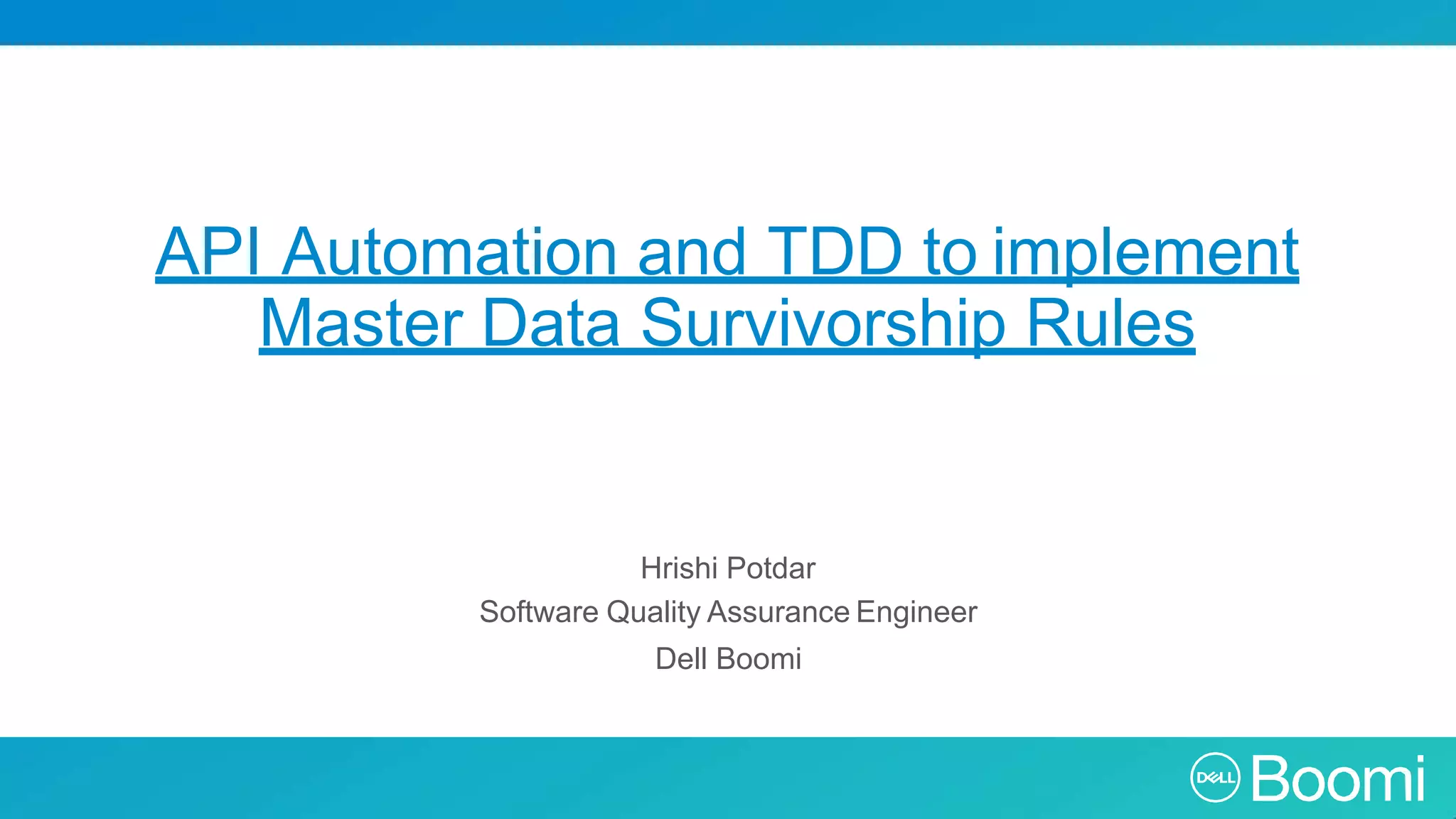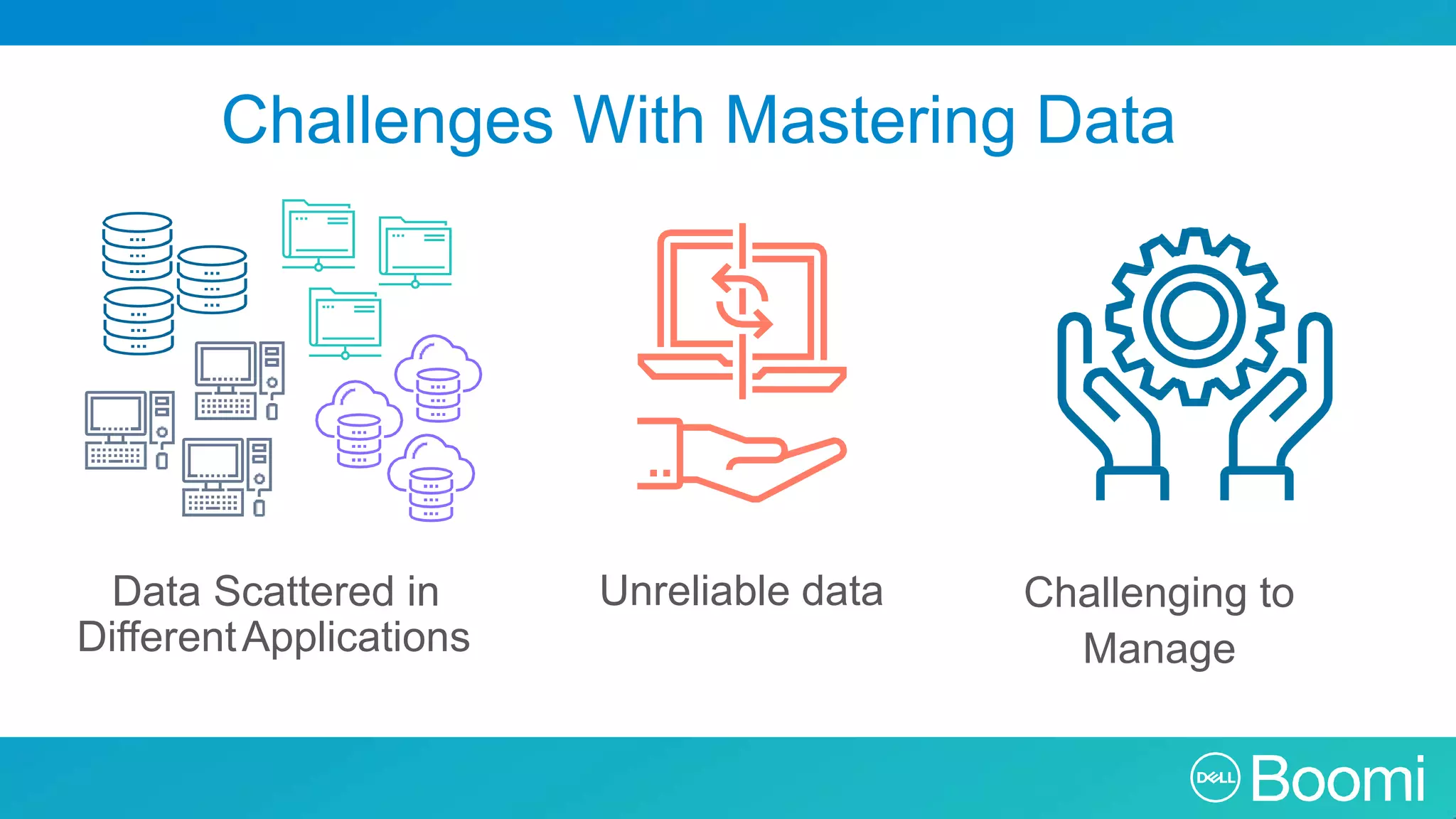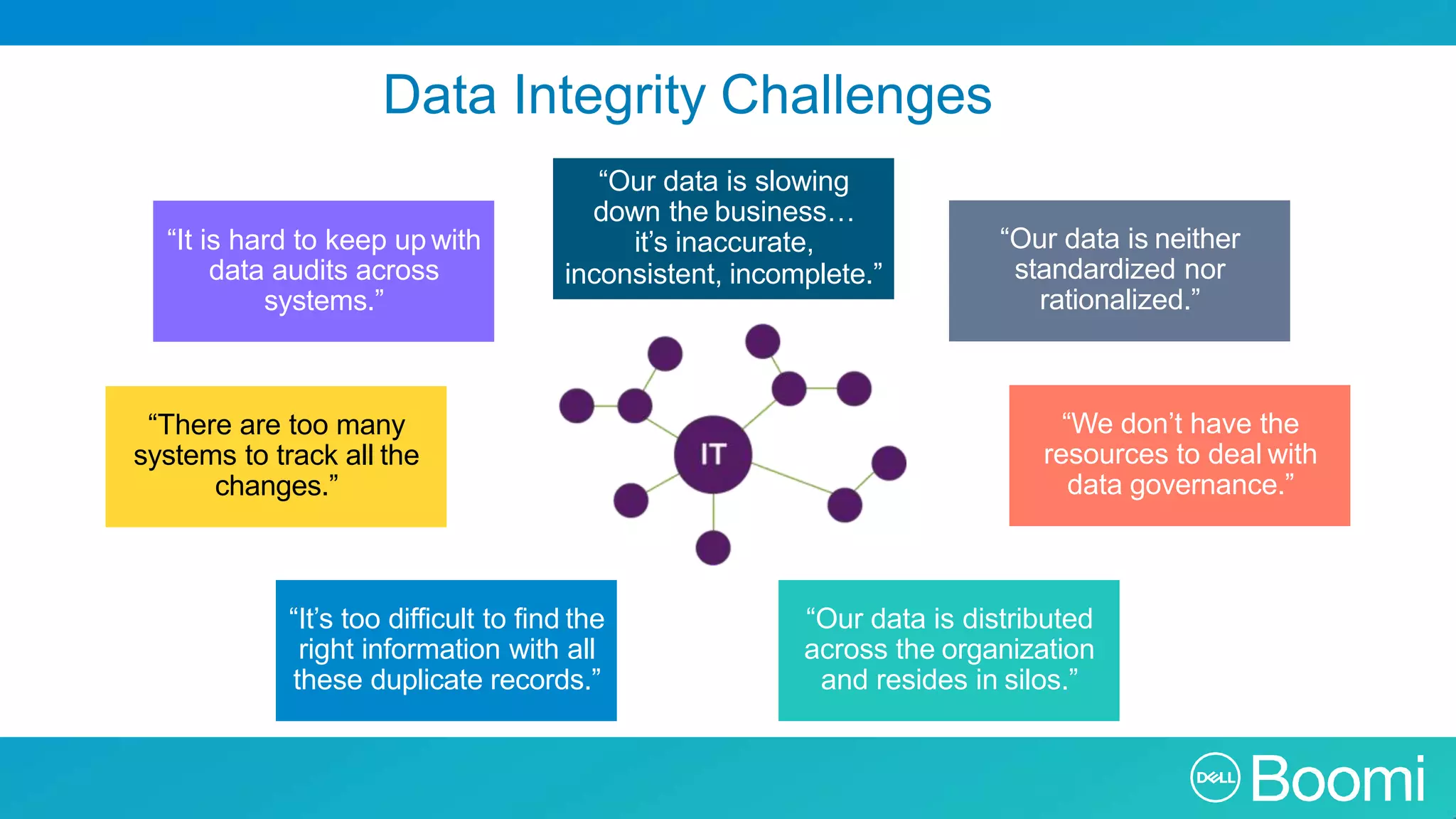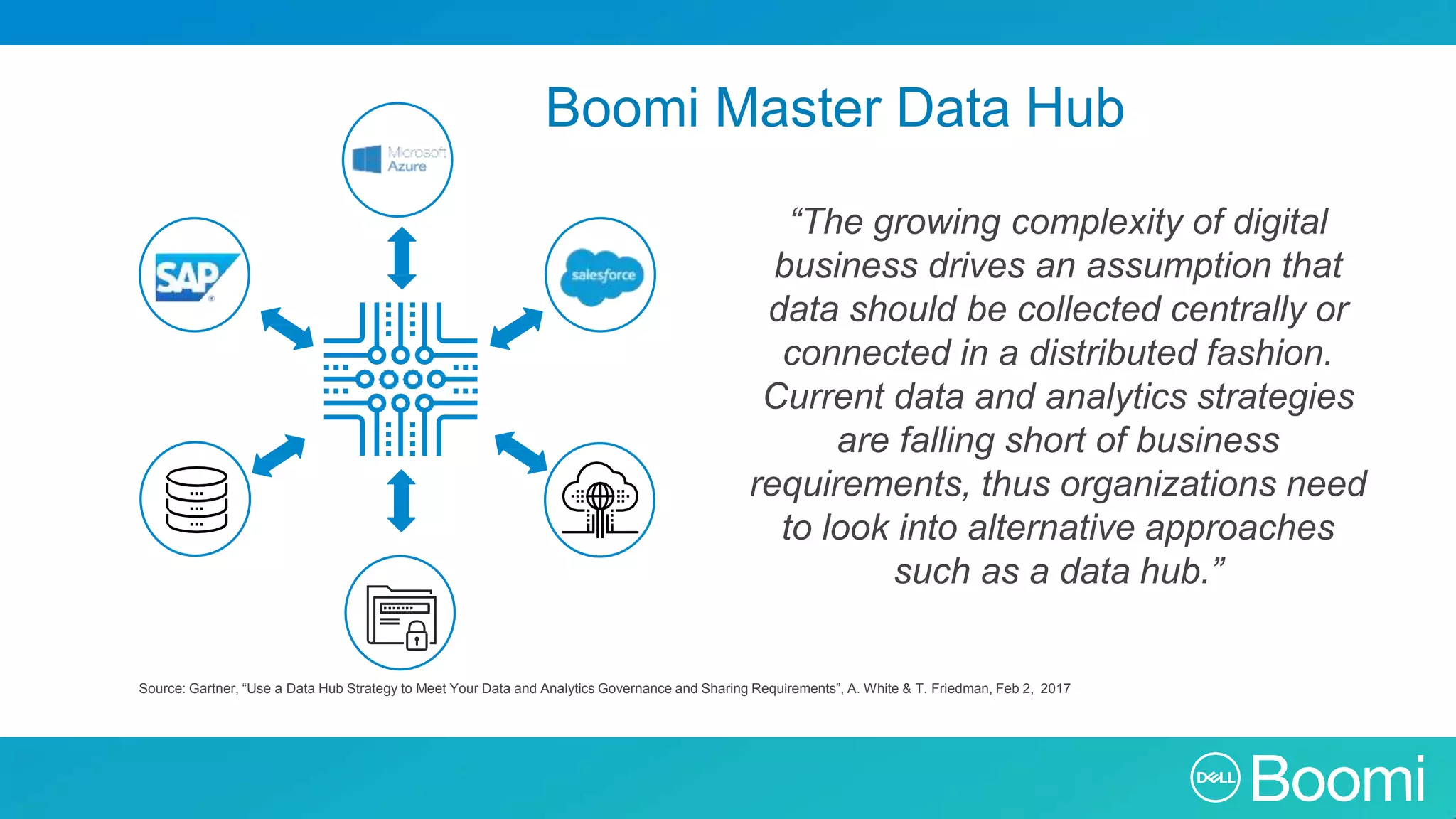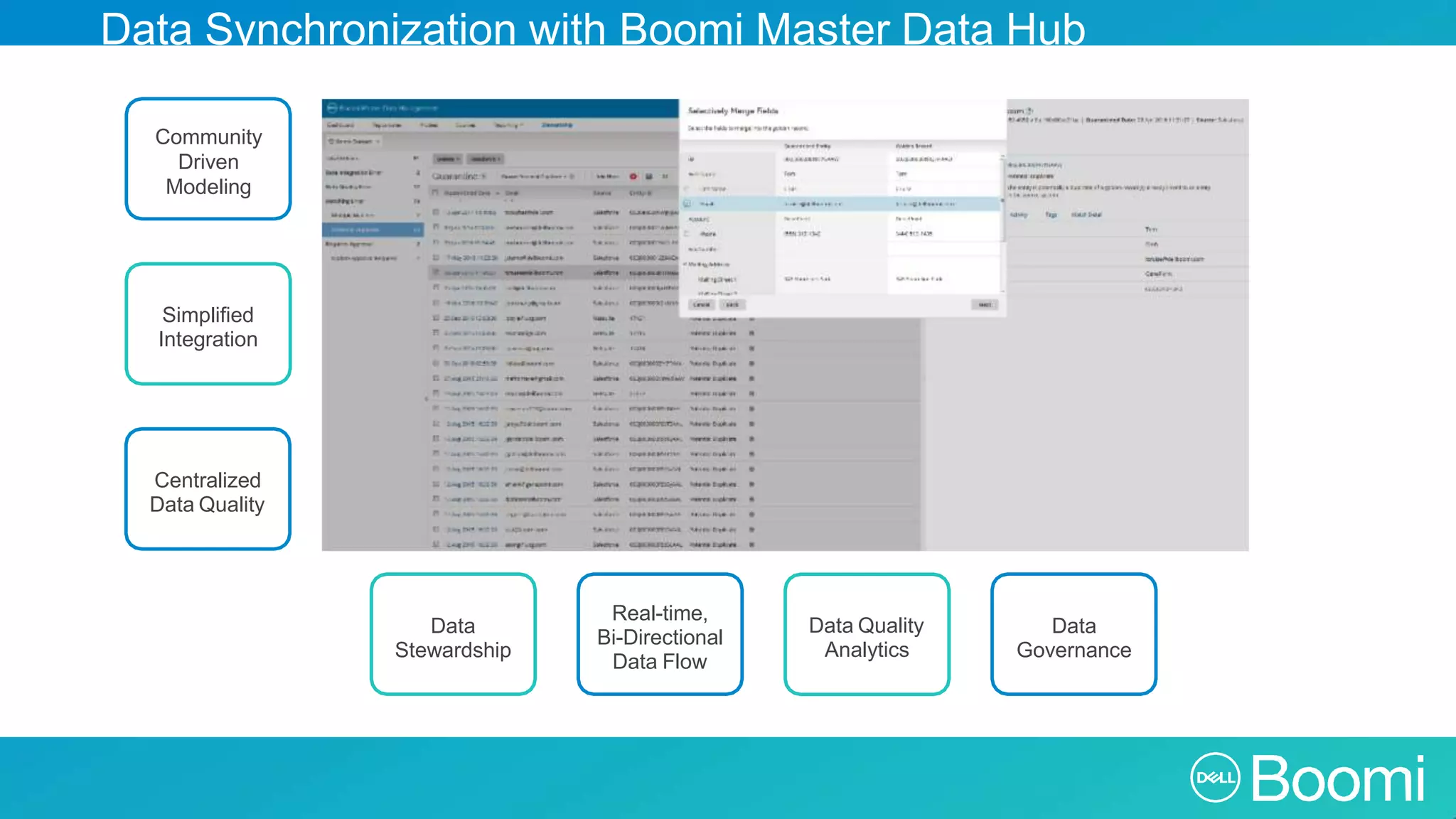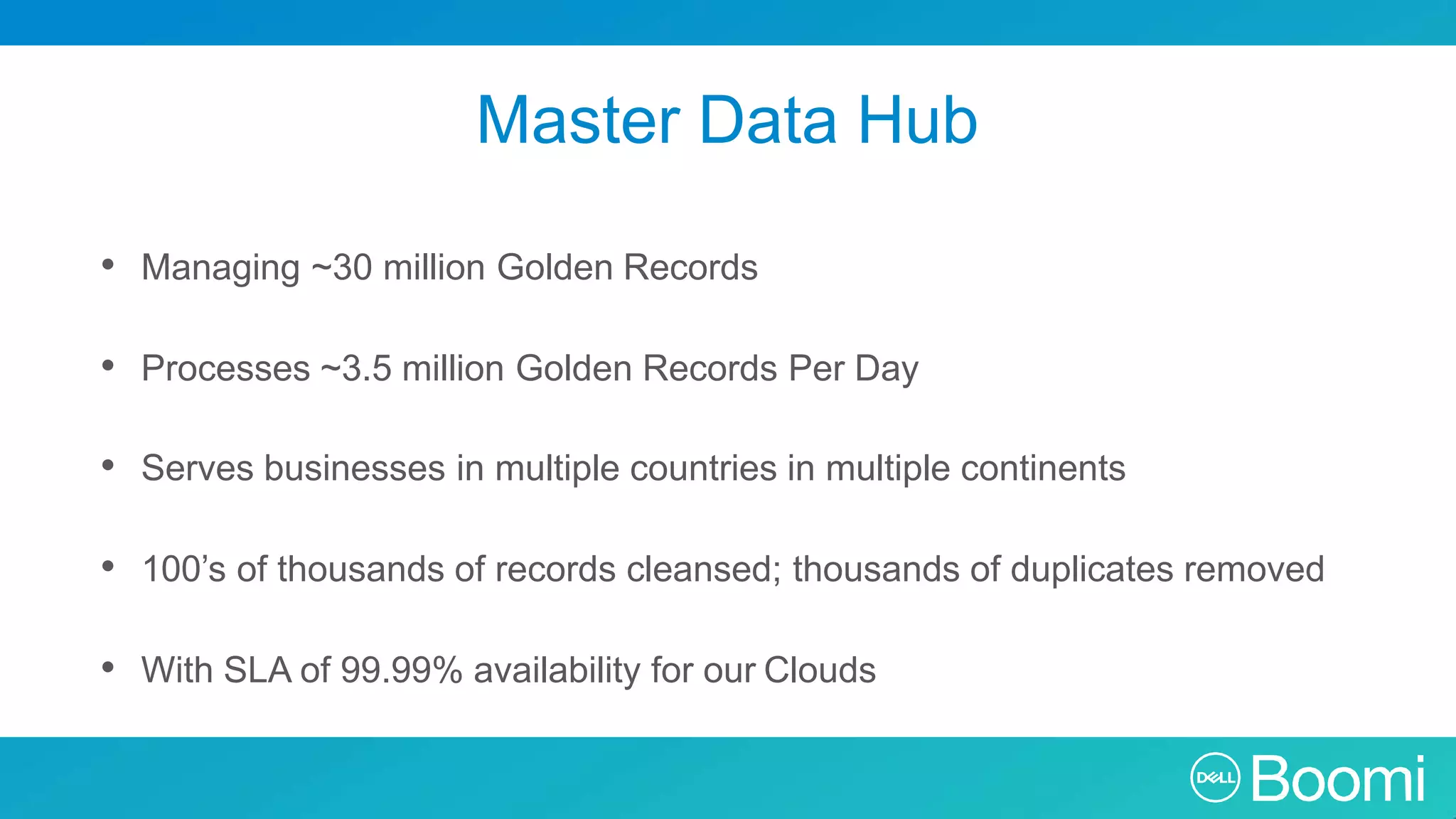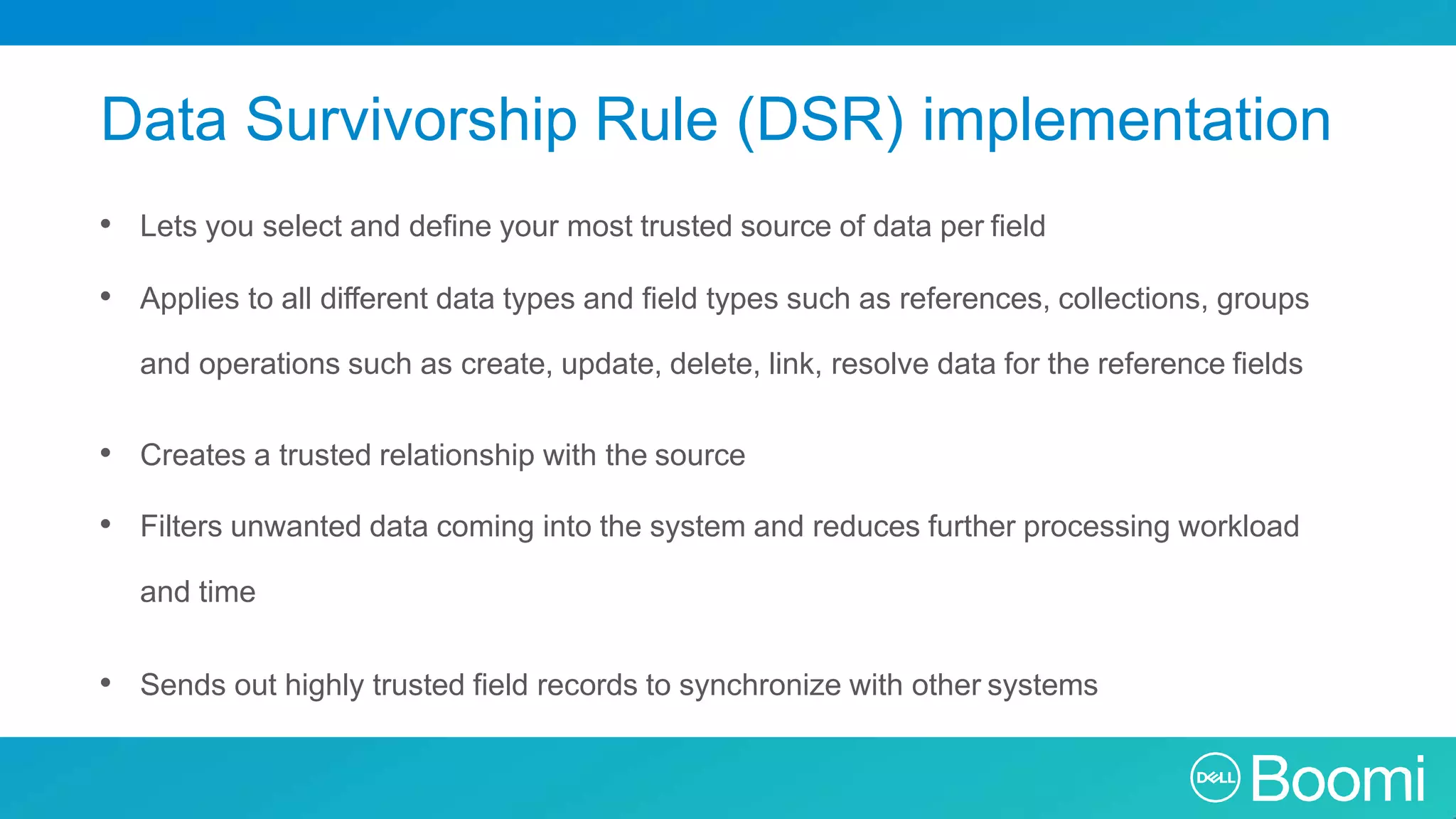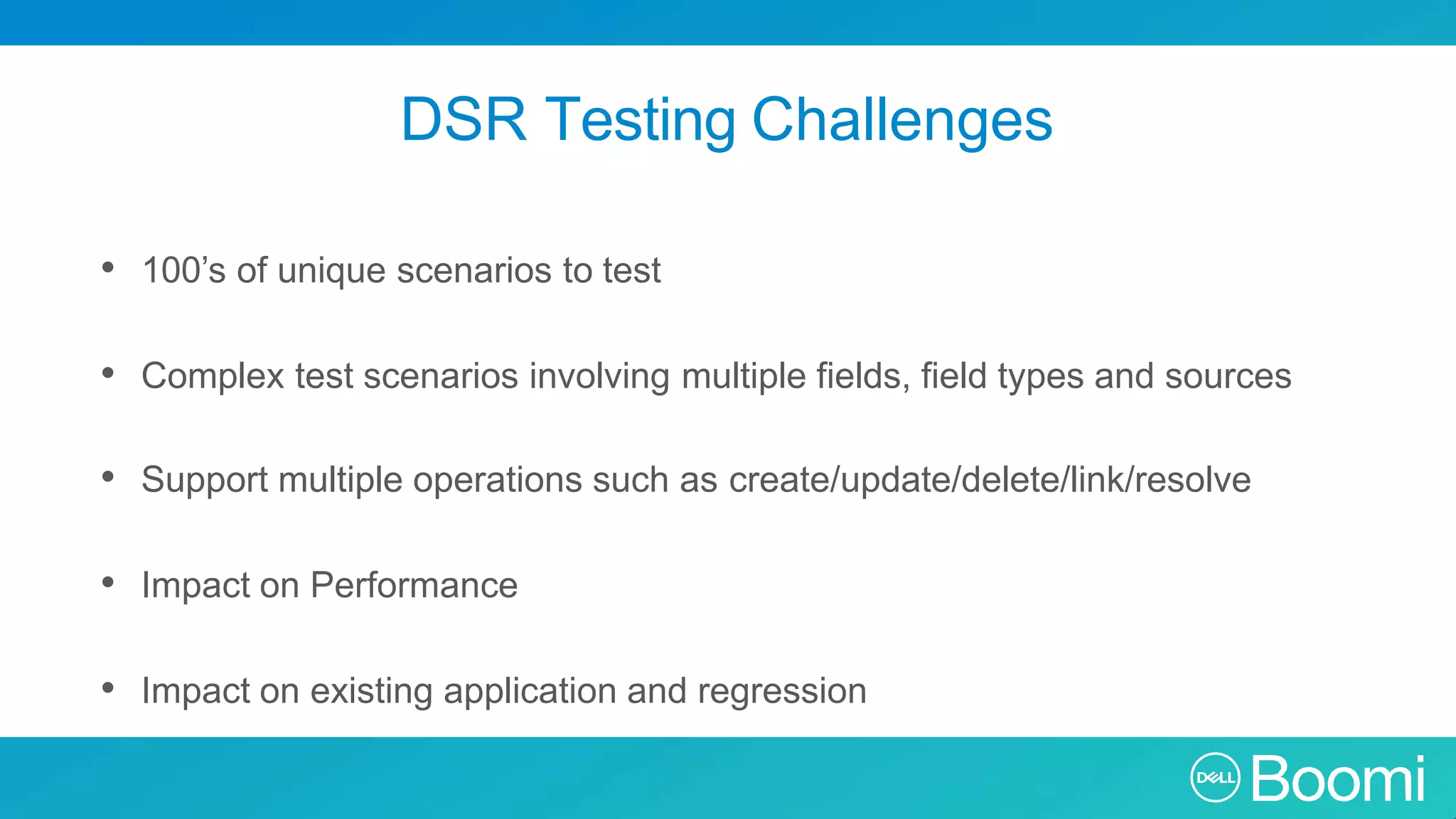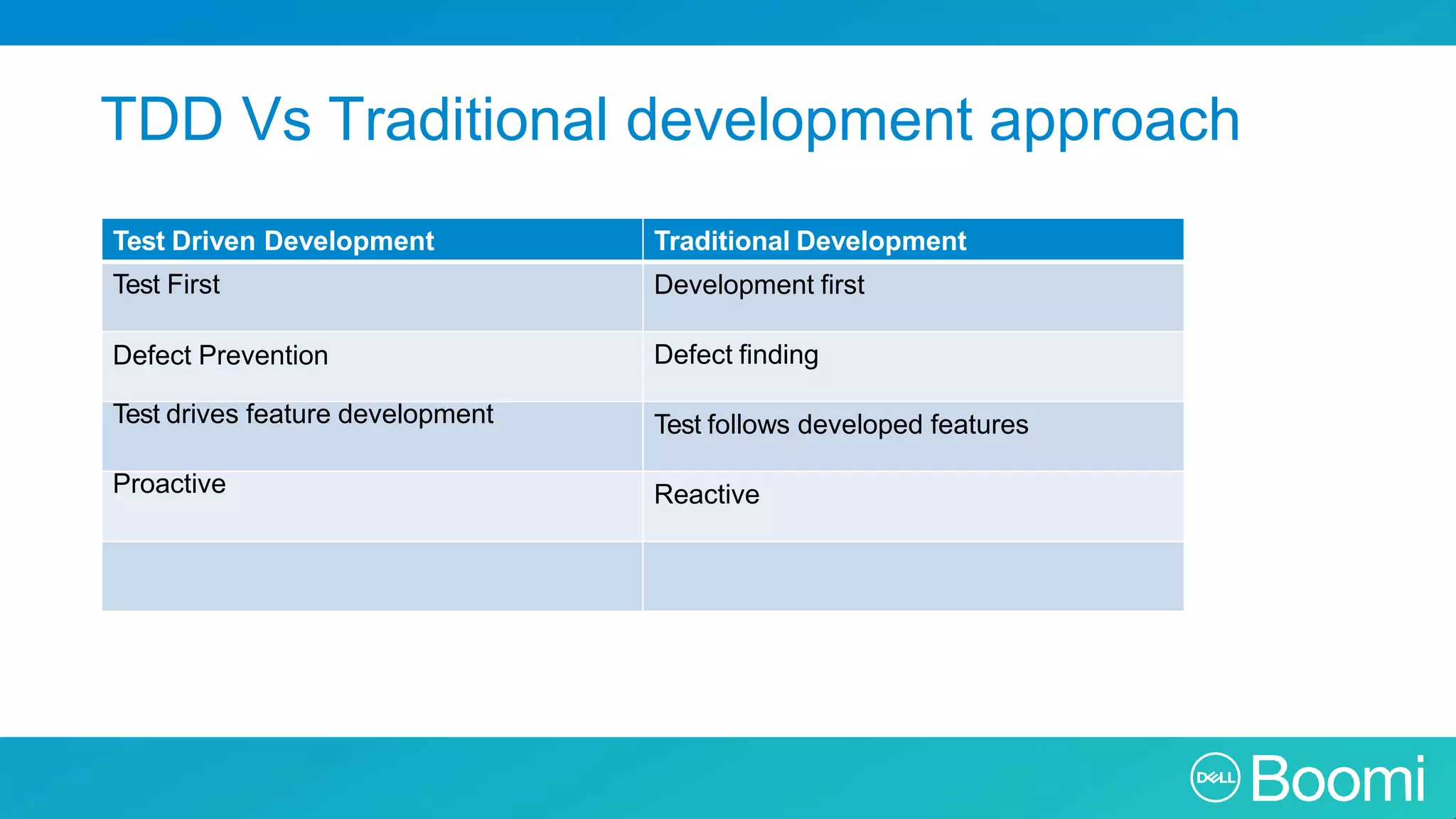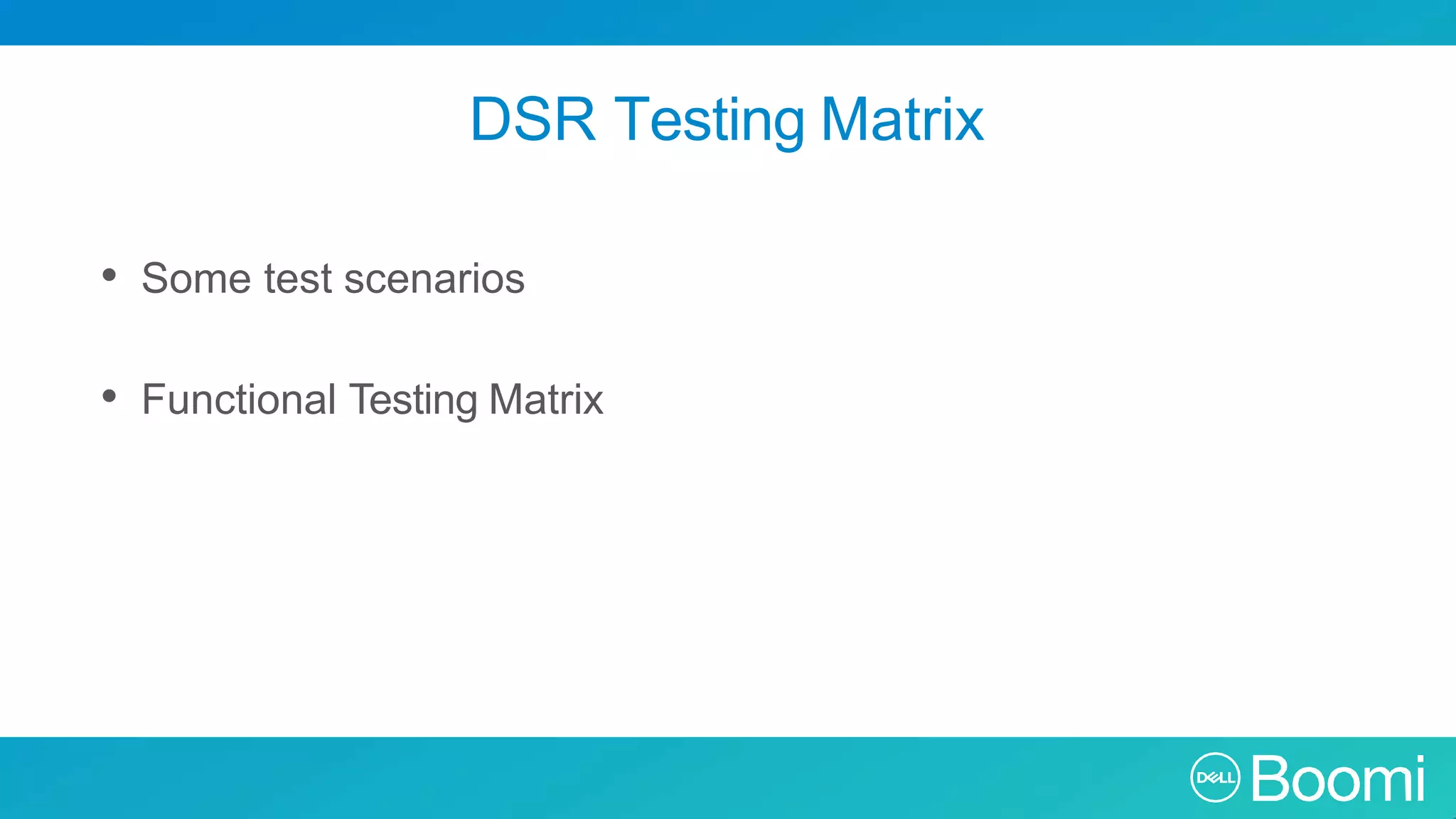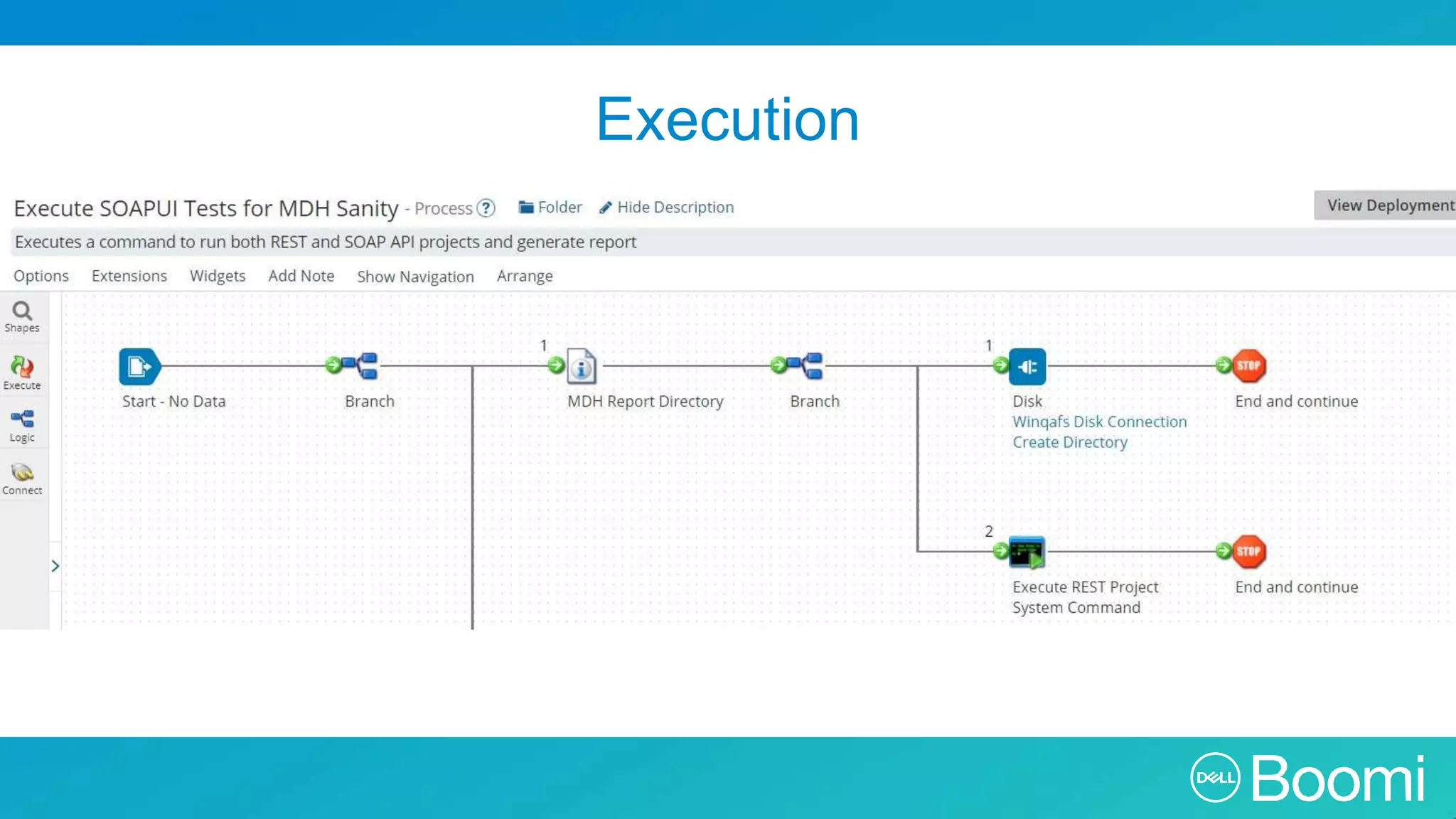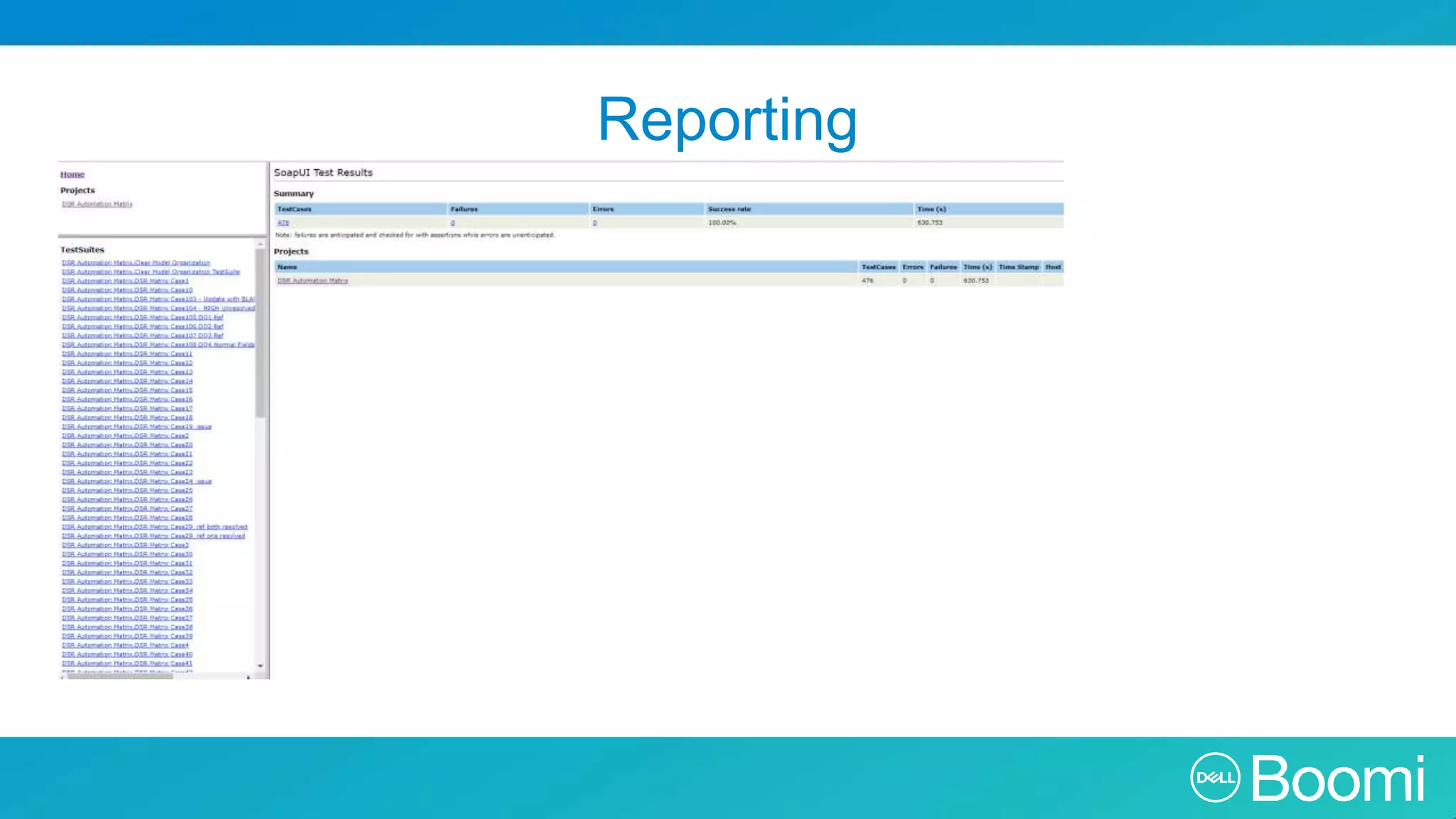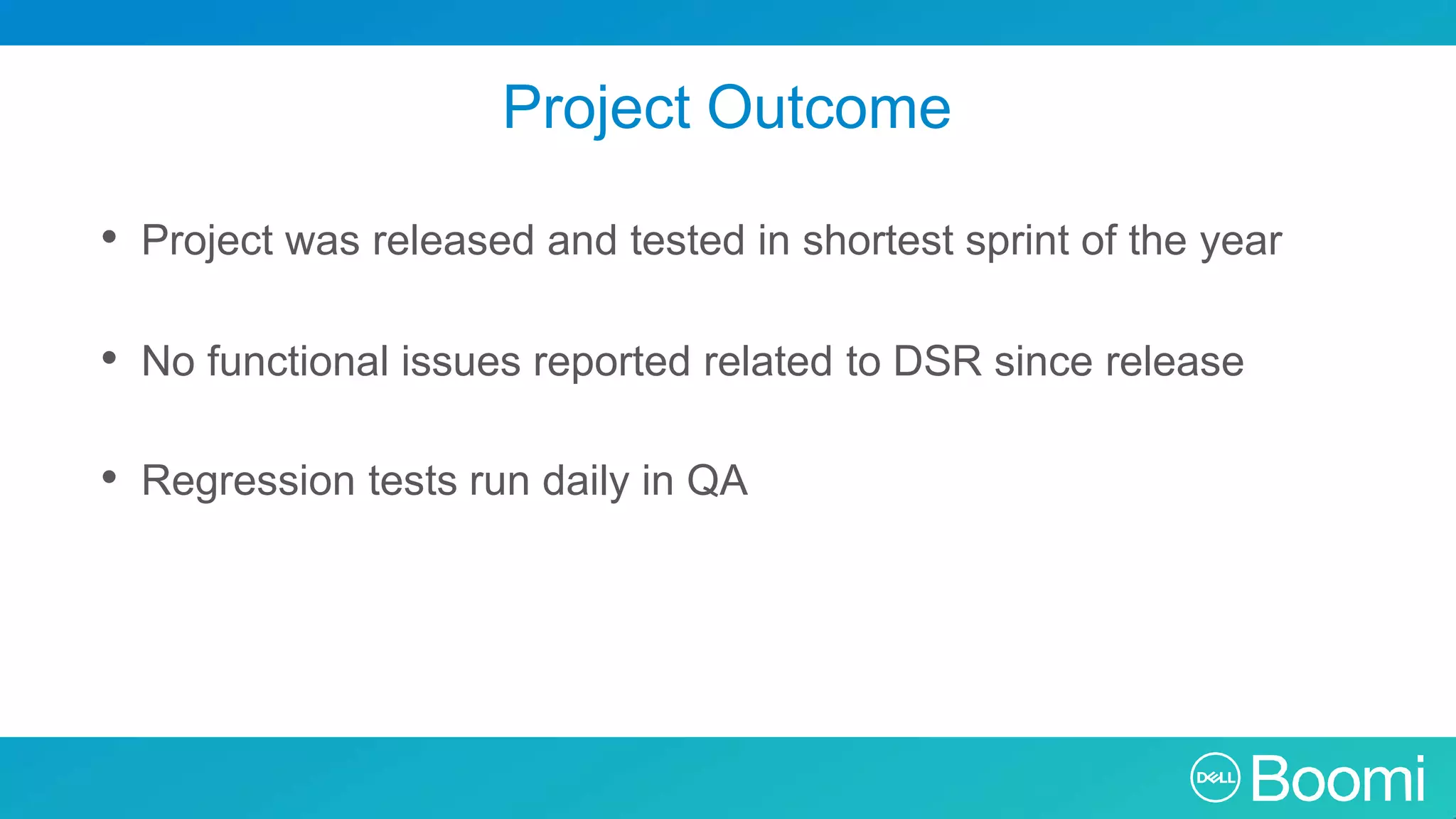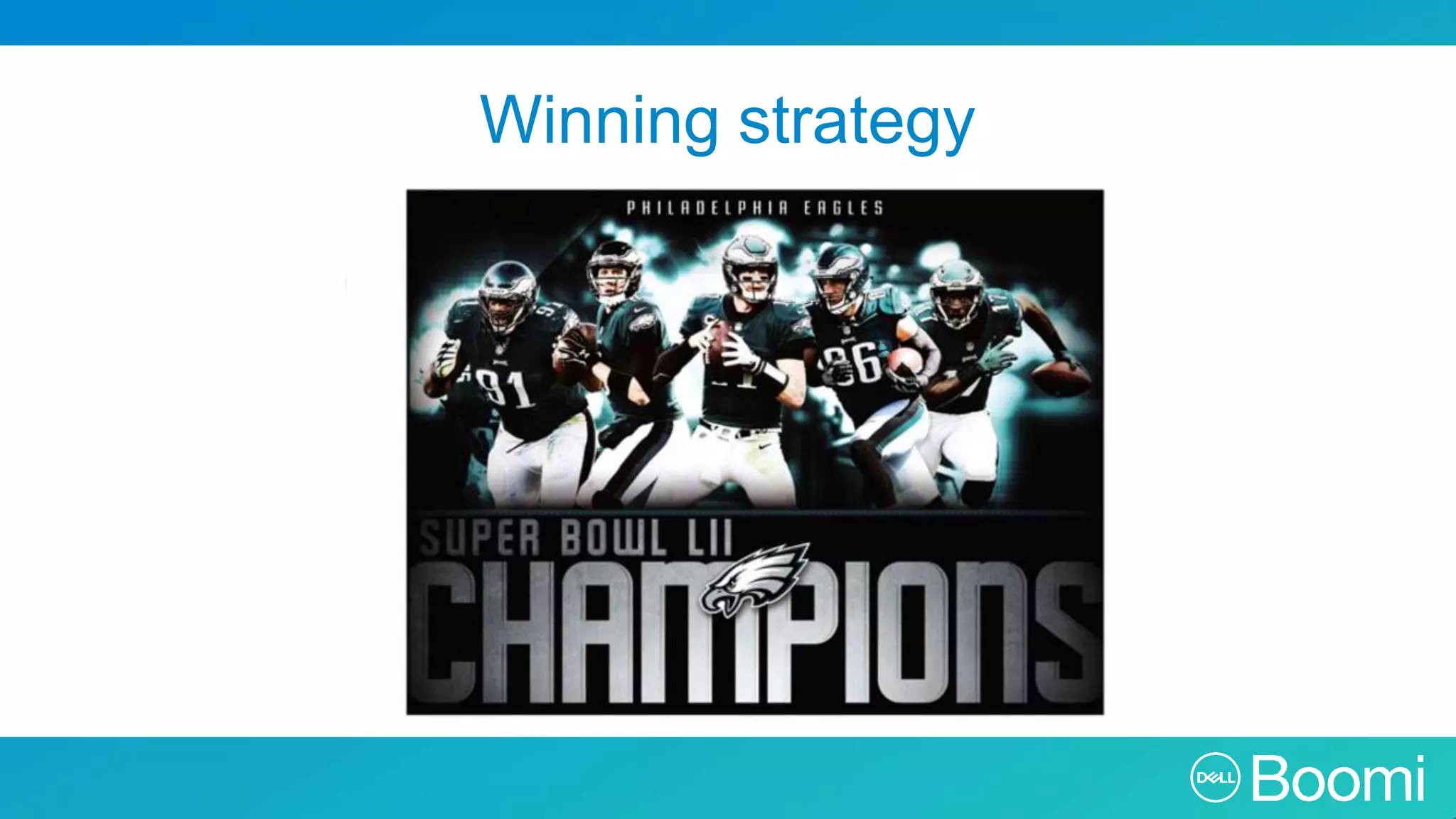The document discusses implementing and testing data survivorship rules (DSRs) for master data using API automation and test-driven development (TDD). It notes the challenges of testing the complex scenarios involving DSRs across different fields, field types, and data operations. The solution involved creating a testing matrix and using the ReadyAPI tool to drive development and prevent defects through an automated test-first approach. This allowed the DSR project to be completed in the shortest sprint yet with no functional issues reported after release.
